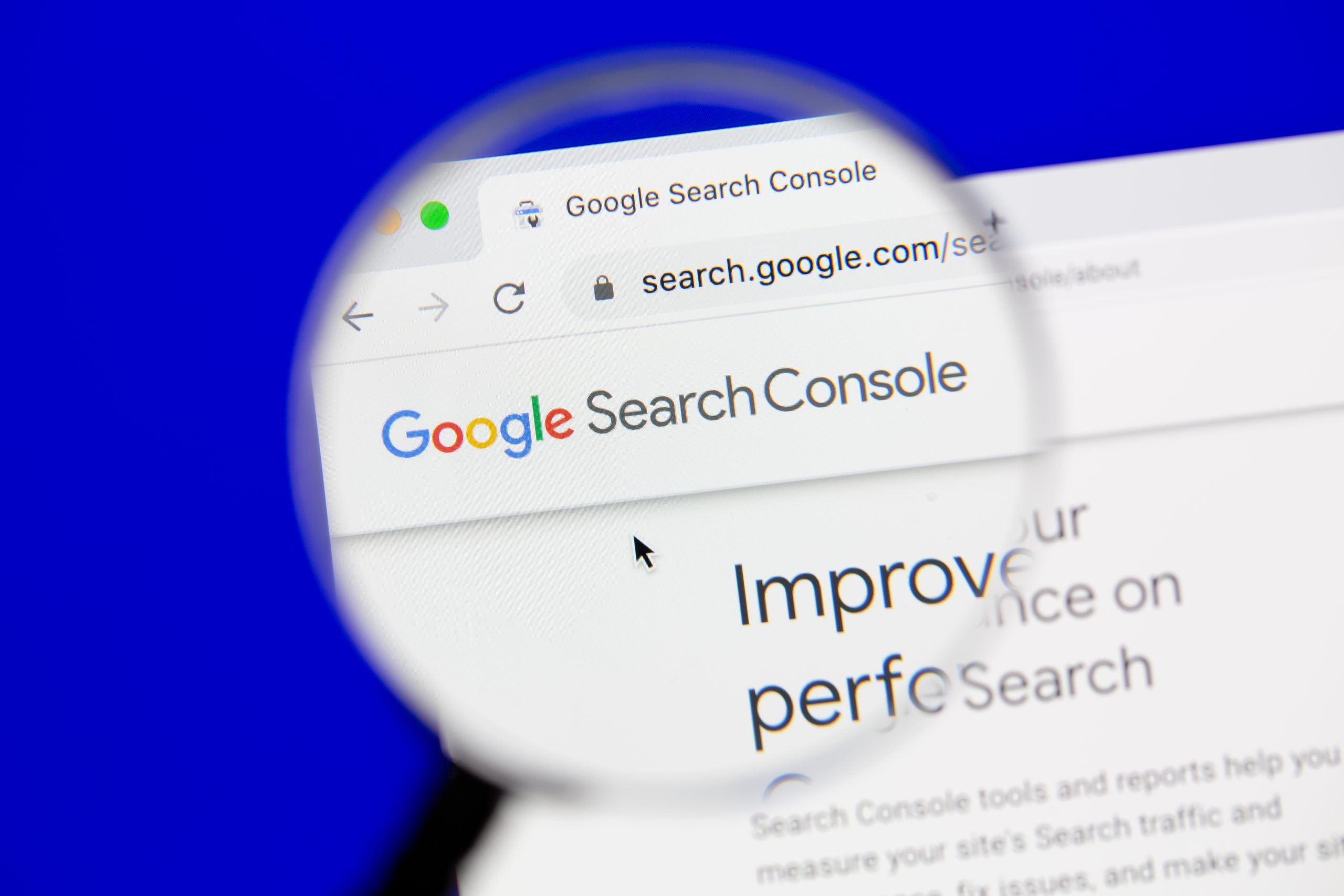How to Navigate the Google Search Console Interface
Navigating Google Search Console is essential for leveraging its full potential and understanding its insights. Efficient navigation helps pinpoint SEO opportunities and rectify errors that could hinder your website’s performance.
The Performance tab in GSC is a critical feature for analyzing your site’s performance in Google search results.
- Accessing Data: Once you log into GSC, the Performance tab will be among the top navigation options. Here, you can review essential metrics like total clicks, impressions, average CTR, and average position over a selected time frame.
- Query Insights: Dive into which queries are driving traffic to your site. This data helps identify strong keywords and phrases you may want to focus on in your content strategy.
- Page Performance: Analyze which web pages get the most impressions and clicks. Understanding this can help prioritize which pages need optimization to boost their visibility and improve CTR.
Analyze Index Coverage Reports
Index Coverage reports in GSC are pivotal for ensuring that Google successfully crawls and indexes all the intended pages of your website.
- Error Identification: These reports highlight indexing errors, such as server errors, redirect issues, and blocked or excluded pages. Each category gives clues about potential obstacles affecting your site’s SEO.
- Resolve Errors: Actionable solutions are available for identified errors. Use error lists to systematically troubleshoot and fix the problems, ensuring Google can effectively crawl and index your site.
- Submission of New URLs: If you’ve added new pages or made significant updates, the Index Coverage report allows you to see if these changes are captured by Google’s indexing process.
The URL Inspection tool is designed to give you insights into how Google views a particular URL on your site.
- Live URL Testing: You can check the current status of a URL by submitting it for live testing. This will show you the indexing status and any issues affecting that specific URL.
- Request Indexing: After making changes to a webpage, use the URL Inspection tool to request Google to re-crawl and index the page. This can speed up how quickly these changes appear in search results.
- Detailed Analysis: You receive a summary of the URL’s potential issues, such as mobile usability or AMP-related errors. This thorough analysis helps ensure each page is optimized for search visibility.
By mastering the navigation of these critical elements within Google Search Console, webmasters can ensure their websites are optimally indexed, enjoy better visibility, and see improved performance in search results.

Top GSC Errors & Their Solutions
Understanding and fixing errors in Google Search Console (GSC) is essential for maintaining your site’s search presence. Here, we outline some common GSC errors and their solutions to help you keep your SEO strategy effective.
Fix Server Errors (5xx)
Server errors, represented by the 5xx HTTP status code, indicate that the server failed to fulfill a valid request. These errors can severely affect your site’s SEO performance since they prevent Google from accessing your pages, which is crucial for indexing.
- Identify the Error: Use GSC’s Index Coverage report to locate any server errors affecting your pages. Common server errors include 500 (Internal Server Error), 502 (Bad Gateway), and 503 (Service Unavailable).
- Diagnosis and Fix: Perform a server diagnosis using Fetch as Google in GSC or third-party tools like Pingdom or GTmetrix to identify the root cause.
- Internal Server Error (500): Often fixed by inspecting server logs and diagnosing a misconfiguration or bug within server scripts.
- Bad Gateway (502): Usually involves issues between proxies or gateways, often resolved by checking server configurations and credentials.
- Service Unavailable (503): Often a temporary state due to server load; ensure server resources are sufficient and possibly increase timeouts.
Resolve Redirect Issues
Redirect issues can result in poor user experience and confusion over which page Google should prioritize for indexing.
- Identify Problems: Navigate to GSC’s Index Coverage report to find redirect errors which might include redirect loops or lengthy chains.
- Corrective Actions:
- Simplify Redirects: Ensure each redirect has a single, direct path to the final destination. Avoid chaining redirects as they can diminish page authority.
- Fix Bad URLs: Double-check and correct any incorrect redirects to avoid linking to broken URLs.
- Length Check: Keep track of URL lengths to ensure they do not exceed HTTP limits.
Correct Robots.txt Blockages
Robots.txt files are essential for guiding crawlers on which parts of the site are accessible. Incorrect configurations here can block essential content from being seen by Google.
- Check the Robots.txt File: Use GSC’s robots.txt tester tool to verify its accessibility and functionality.
- Fix Any Errors:
- Ensure Accessibility: Make sure the robots.txt file itself is accessible to Googlebot.
- Remove Unintentional Blocks: Adjust the file to allow Googlebot to access the necessary parts of your site while preventing crawling of unimportant or redundant areas.
- Re-test Post Changes: Once adjusted, retest the file to confirm that Googlebot can crawl relevant pages effectively.
Properly addressing these common GSC errors can significantly enhance your site’s ability to be crawled and indexed correctly, promoting better search engine performance and visibility.

How to Optimize Your Website’s Indexing & Crawlability
Optimizing your website’s indexing and crawlability is crucial for enhancing visibility in search engine results. By addressing technical issues and improving the way your content appears in search results, you can drive more organic traffic to your site.
Tackle ‘Noindex’ Marks and Soft 404 Errors
‘Noindex’ marks and soft 404 errors can prevent your pages from being properly indexed by search engines. Here’s how to manage these issues effectively:
- Identify Unintentional ‘Noindex’ Tags: Use Google Search Console’s URL Inspection Tool to check if crucial pages are tagged with ‘noindex’.
- Remove or Adjust Tags: For important pages, ensure the ‘noindex’ tag is removed so that Google can include these pages in search results. Implement tags only where necessary, such as on redundant content.
- Identify Soft 404s: Use the GSC Index Coverage Report to find soft 404 pages. These are misleading indicators of successful page loads for non-existent pages.
- Correct Status Codes: Ensure that true 404 pages return a 404 status code and do not serve a 200 OK response. Implement relevant redirects if necessary.
Improving click-through rates (CTRs) enhances your overall SEO performance. Meta descriptions play a key role in enticing users to click on your link in search results.
- Create Engaging Meta Descriptions: Write concise and appealing summaries that convey the value proposition of your page.
- Incorporate Target Keywords: Include primary keywords in your meta descriptions to align with search intent and queries.
- Utilize Call to Actions (CTAs): Encourage users to engage with CTAs such as “Learn more” or “Read today” to entice clicks.
Strategies to Handle 404 Not Found Errors
404 Not Found errors can disrupt user experience and SEO if not managed properly.
- Identify 404 Pages: Regularly audit your site using tools like Google Analytics and GSC to find broken links.
- Implement 301 Redirects: For significant pages, set up 301 redirects to guide users to relevant content. This helps retain link equity and maintains user experience.
- Consider Removing Links: For irrelevant or outdated content, consider removing links that direct users to 404 pages.
Focusing on these strategies for optimizing indexing and crawlability can enhance the efficiency of Google’s interactions with your site and improve its visibility and traffic from search engines.
How to Implement an Effective SEO Strategy Using GSC Insights
Google Search Console (GSC) is a powerful tool for crafting an effective SEO strategy. By leveraging its data, you can optimize your website’s content, monitor site performance, and ensure ongoing success in search engine results.
Leverage GSC Data for Content Optimization
- Keyword Research and Optimization:
- Identify Top Queries: Use the Performance tab to find which search queries bring traffic to your site. Prioritize these keywords and optimize existing content around them.
- Assess Page Rankings: Examine which pages are ranking for valuable keywords and analyze areas where improvements can help climb the search rankings.
- Update Underperforming Content: Refresh and enhance content that ranks lower than desired. Incorporate relevant terms and ensure the content aligns with user search intent.
- Optimize for User Experience:
- Mobile Usability: Use the GSC Mobile Usability report to ensure pages are mobile-friendly, addressing any reported issues promptly.
- Structured Data Utilization: Leverage structured data to enhance how your pages appear in search results, making them more appealing and likely to garner clicks.
- Page Experience Insights:
- Core Web Vitals: Utilize the Core Web Vitals report to understand and improve page speed, interactivity, and visual stability. Address any highlighted issues that could negatively impact user experience.
- Performance and Speed Optimizations:
- Fix Technical Errors: Continuously monitor GSC for crawl errors, server issues, and indexing problems, correcting them to maintain site health.
- Enhance Loading Times: Optimize code, compress images, and leverage browser caching to ensure quick page loads, which are crucial for both search ranking and user satisfaction.
Create an Action Plan for Ongoing SEO Maintenance
- Regular Data Reviews: Schedule regular checks of GSC reports to stay on top of changes in performance and indexing.
- Set SEO Goals: Define clear SEO objectives based on GSC insights, such as increasing traffic, enhancing CTRs, or boosting keyword rankings.
- Continuous Content Improvement: Regularly update and expand your site’s content to reflect user demand and search trends, informed by GSC data.
- Competitor Analysis: Use tools alongside GSC to compare your site’s performance with competitors and identify areas for growth.
Through dedicated use of Google Search Console insights, you can develop an actionable and effective SEO strategy that adapts to the evolving digital landscape and helps achieve your business goals. For an all-in-one solution to optimize your website’s SEO performance, consider using AlphaRank, which can complement your GSC efforts and streamline your SEO workflow.



